The sea lions pull themselves around the tables while the pelicans compete with them for the fish remnants. The fisherman have brought in their day's catch and are unloading and cleaning them on the tables at the shore. The birds jump around on the cleaning tables while the sea lions stand up to the tables edge to see the fish spread out for cleaning. I am in the Galápagos Islands on the Island of Santa Cruz in the port city of Puerto Ayora, Ecuador.
I'm not sure how it happened but my ticket had stamped on it "TSA Precheck"
. Which meant I didn't have to remove my shoes and belt and things like the other passengers that were getting screened did. It was nice, but I don't know how I got so lucky.
The flight from Memphis through Miami landed me in the capitol city of Ecuador, Quito, in the middle of the night. I waited through the night at the airport for my flight to the Galápagos Islands. You cannot fly directly into the islands. You need to purchase a separate ticket from here to the islands.
The 3 hour flight from Quito to the Galápagos Islands will cost almost as much as the flight from Memphis to Quito cost. Then, when the plane lands, I will have to pay $110 just to set foot on the islands.
The flight leaves the next morning, stopping only in Quayquil, Ecuador to pick up more passengers. The next stop is at the airport on the island of Baltra. We all go through customs and pay the $110 fee
. The police dogs check all the bags for drugs before we are allowed near our bags.
The next step is to catch a shuttle bus that takes us on a short trip to the dock. Boats await and take us across the water to the shore of the island of Santa Cruz.
Public busses wait at the dock on Santa Cruz and here you choose a bus for the 45 minute ride to the port town of Puerto Ayora.
Puerto Ayora is located on the southern end of Santa Cruz Island. It's the 2nd largest island in the Galapagos. Puerto Ayora is a lively little port town. Puerto Ayora has about 12,000 residents, the most of any town in the Galápagos Islands. It also has the best developed infrastructure of any of the islands.
After finding a place to stay (where no one spoke any English) and figuring out what to pay for the private room, I went out to explore the town
.
Puerto Ayora is headquarters for the Charles Darwin Research Station. Fresh seafood is abundant, prepared from the daily catch.
Seaside hotels, scuba diving schools, cruise agencies, sourvernier shops and all sorts of night time activities enjoyed by both the traveler and the locals are here in this little place.
Along the shoreline in Puerto Ayora I spotted a place where the fishermen were bringing in their catch for the day. Sea Lions, pelicans, and other birds darted around the cleaning area, waiting for any scraps. There were also many iguanas strolling along the sidewalks, and colorful huge crabs climbing over the volcanic rocks along the shore.
The temerpature in the Galápagos Islands, at least in Puerto Ayora, stays around the mid 70's. It's a very pleasant climate. Also, the night temperatures only drop by a couple of degrees. It's a year-round thing!
The sailboats in the bay with the sea lions swimming around and the birds diving for fish while the iguanas roam the sidewalks, with the large colorful crabs crawling over the lava rock along the bay, make this a delightful little place
.
The street that runs along the coast is always full of people eating, or dancing, skateboarding or even doing kick-boxing. I saw a parade one night, even. When you watch the video, you can see the dolls the girls in the parade balance on their heads while marching!
Taxis here are white pick-up trucks. You can ride to anywhere in the town for $1. They drive around the streets all day and you just flag one down if you need a ride. If you have boxes, furniture, bicycle, etc. you just pop it in the bed of the truck and off you go, all for $1.00.
Ecuador uses the U.S. Dollar for their currency, but they have their own coins for $1 and less.
The Charles Darwin Research Center is here and I walked to it one day. They rescue the tortoise eggs and incubate them. The temperature of the incubator determines the sex of the tortoise. A temperature of 85F produces a female and 82.4F produces a male.
The young tortoises are separated by age as they mature. As they age they are moved to sections where the habitate becomes more like the natural one they live in when in the wild. Once mature, they are introduced back into the wild.
Some of these tortoises are HUGE. It is hard to tell the actual size from the photos without anything to compare them to, but trust me when I say these are the largest I have seen.
NEXT: DIRT ROADS AND TEARS
Arriving in The Galápagos Islands (Ecuador)
Sunday, August 03, 2014
 Galapagos Islands, Ecuador
Galapagos Islands, Ecuador
Other Entries
-
168Death Ships (Malaysia)
Mar 30126 days prior Miri, Malaysiaphoto_camera56videocam 13comment 0
Miri, Malaysiaphoto_camera56videocam 13comment 0 -
169Disconnected From the World! (Malaysia)
Mar 31125 days prior Gunung Mulu National Park, Malaysiaphoto_camera32videocam 10comment 0
Gunung Mulu National Park, Malaysiaphoto_camera32videocam 10comment 0 -
170Seeing "The Garden of Eden" (Malaysia)
Apr 03122 days prior Limbang, Malaysiaphoto_camera58videocam 9comment 0
Limbang, Malaysiaphoto_camera58videocam 9comment 0 -
171Headhunters of Borneo! (Malaysia)
Apr 04121 days prior Kota Kinabalu, Malaysiaphoto_camera43videocam 6comment 0
Kota Kinabalu, Malaysiaphoto_camera43videocam 6comment 0 -
172The World's Most Expensive Building! (Singapore)
Apr 19106 days prior Singapore, Singaporephoto_camera107videocam 19comment 0
Singapore, Singaporephoto_camera107videocam 19comment 0 -
173Home Again? (Indonesia)
Apr 23102 days prior Yogyakarta, Indonesiaphoto_camera113videocam 14comment 0
Yogyakarta, Indonesiaphoto_camera113videocam 14comment 0 -
174Walking The Volcano Rim (Indonesia)
Apr 2996 days prior Tengger Caldera, Indonesiaphoto_camera111videocam 32comment 0
Tengger Caldera, Indonesiaphoto_camera111videocam 32comment 0 -
175The World's Most Expensive Coffee! (Indonesia)
May 0293 days prior Sanur, Indonesiaphoto_camera156videocam 21comment 0
Sanur, Indonesiaphoto_camera156videocam 21comment 0 -
176When I Say America (Indonesia)
May 0491 days prior Senggigi, Indonesiaphoto_camera87videocam 11comment 0
Senggigi, Indonesiaphoto_camera87videocam 11comment 0 -
177The Amazing Rinjani (Indonesia)
May 0887 days prior Senggigi, Indonesiaphoto_camera45videocam 7comment 0
Senggigi, Indonesiaphoto_camera45videocam 7comment 0 -
178The World Without Automobiles (Indonesia)
May 1184 days prior Gili Trawangan, Indonesiaphoto_camera48videocam 5comment 0
Gili Trawangan, Indonesiaphoto_camera48videocam 5comment 0 -
179How Can I Get to Labuanbajo? (Indonesia)
May 1382 days prior Sape, Indonesiaphoto_camera52videocam 6comment 0
Sape, Indonesiaphoto_camera52videocam 6comment 0 -
180Pigs, Chickens and Flat Tires (Indonesia)
May 1778 days prior Ende, Indonesiaphoto_camera104videocam 16comment 0
Ende, Indonesiaphoto_camera104videocam 16comment 0 -
181Which Way to Bajawa? (Indonesia)
May 1877 days prior Bajawa, Indonesiaphoto_camera55videocam 3comment 0
Bajawa, Indonesiaphoto_camera55videocam 3comment 0 -
182The Tribes of Bajawa (Indonesia)
May 1976 days prior Bajawa, Indonesiaphoto_camera84videocam 5comment 0
Bajawa, Indonesiaphoto_camera84videocam 5comment 0 -
183The Ugliness of War! (Cambodia)
Jun 1153 days prior Sihanoukville, Cambodiaphoto_camera121videocam 14comment 0
Sihanoukville, Cambodiaphoto_camera121videocam 14comment 0 -
184The Empty Streets of Thailand (Thailand)
Jun 3034 days prior Bangkok, Thailandphoto_camera27videocam 0comment 0
Bangkok, Thailandphoto_camera27videocam 0comment 0 -
185Arriving in The Galápagos Islands (Ecuador)
Aug 03 Galapagos Islands, Ecuadorphoto_camera85videocam 5comment 0
Galapagos Islands, Ecuadorphoto_camera85videocam 5comment 0 -
186Dirt Roads and Tears (Isabela Island, Galapagos)
Aug 063 days later Isabela, Ecuadorphoto_camera89videocam 9comment 0
Isabela, Ecuadorphoto_camera89videocam 9comment 0 -
187Inside the Large Intestine? (Galapagos Islands)
Aug 107 days later Puerto Ayora, Ecuadorphoto_camera100videocam 4comment 0
Puerto Ayora, Ecuadorphoto_camera100videocam 4comment 0 -
188Earthquake In Quito (Ecuador)
Aug 129 days later Quito, Ecuadorphoto_camera101videocam 6comment 0
Quito, Ecuadorphoto_camera101videocam 6comment 0 -
189The Presidential Palace (Ecuador)
Aug 1411 days later Quito, Ecuadorphoto_camera56videocam 10comment 0
Quito, Ecuadorphoto_camera56videocam 10comment 0 -
190Meeting The First Family in Ecuador (Ecuador)
Aug 1613 days later Puerto Lopez, Ecuadorphoto_camera77videocam 5comment 0
Puerto Lopez, Ecuadorphoto_camera77videocam 5comment 0 -
191Sibling Rivalry Results in Murder! (Ecuador)
Aug 1714 days later Puerto Lopez, Ecuadorphoto_camera81videocam 11comment 0
Puerto Lopez, Ecuadorphoto_camera81videocam 11comment 0 -
192Standing in the Middle of the World (Ecuador)
Aug 2118 days later Quito, Ecuadorphoto_camera71videocam 9comment 0
Quito, Ecuadorphoto_camera71videocam 9comment 0 -
193The Magnificent Bascilica (Ecuador)
Aug 2219 days later Quito, Ecuadorphoto_camera33videocam 7comment 0
Quito, Ecuadorphoto_camera33videocam 7comment 0 -
194Closing Thoughts on Ecuador
Sep 0230 days later Taipei, Taiwanphoto_camera63videocam 1comment 1
Taipei, Taiwanphoto_camera63videocam 1comment 1 -
195Abandoned by My Tour Guides (Vietnam)
Sep 2452 days later Dong Hoi, Vietnamphoto_camera92videocam 5comment 0
Dong Hoi, Vietnamphoto_camera92videocam 5comment 0 -
196Soup Made from Spit! (Vietnam)
Sep 2553 days later Hoi An, Vietnamphoto_camera24videocam 0comment 3
Hoi An, Vietnamphoto_camera24videocam 0comment 3 -
197The Fire-Breathing Dragon! (Vietnam)
Sep 2957 days later Da Nang, Vietnamphoto_camera31videocam 5comment 0
Da Nang, Vietnamphoto_camera31videocam 5comment 0 -
198The World's Longest Cable Car Ride (Vietnam)
Sep 3058 days later Da Nang, Vietnamphoto_camera62videocam 1comment 2
Da Nang, Vietnamphoto_camera62videocam 1comment 2 -
199War and Peace (Vietnam)
Oct 0159 days later Da Nang, Vietnamphoto_camera94videocam 1comment 0
Da Nang, Vietnamphoto_camera94videocam 1comment 0 -
200Gobsmacked in Melbourne! (Australia)
Oct 0361 days later Melbourne, Australiaphoto_camera63videocam 3comment 0
Melbourne, Australiaphoto_camera63videocam 3comment 0 -
201"This is NOT a Toilet!" (Tasmania, Australia)
Oct 1068 days later Hobart, Australiaphoto_camera46videocam 3comment 0
Hobart, Australiaphoto_camera46videocam 3comment 0 -
202In Prison Leg-Irons! (Tasmania)
Oct 1270 days later Port Arthur, Australiaphoto_camera68videocam 0comment 0
Port Arthur, Australiaphoto_camera68videocam 0comment 0 -
203Face to Face With The Devil? (Australia)
Oct 1674 days later Grampians, Australiaphoto_camera89videocam 4comment 4
Grampians, Australiaphoto_camera89videocam 4comment 4

 Galapagos Islands, Ecuador
Galapagos Islands, Ecuador





























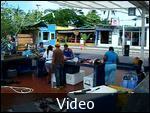

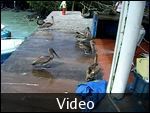









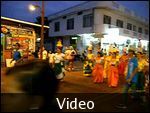































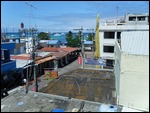
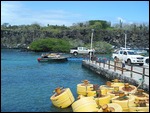
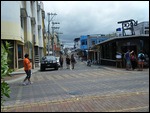
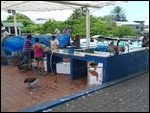
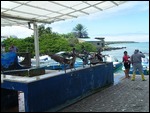
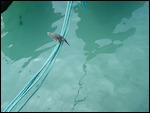
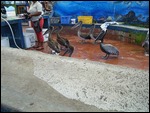

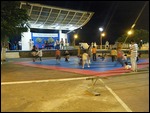

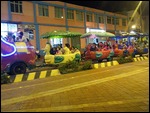
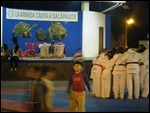
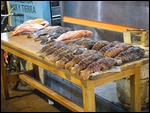
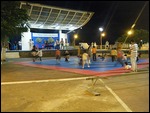

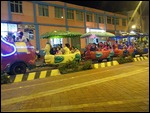
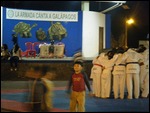

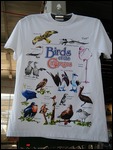

2025-05-22